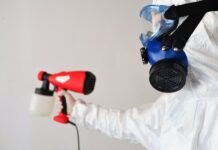Last Updated on July 24, 2024 by Ali Hamza
When it comes to your roof, it’s best to identify the issues before they become a bigger problem. There are main tell-tale signs that it’s time for a roof replacement. Many of these issues come from storm damage, years of wear and tear and improper installation.
Table of Contents
1. Missing Asphalt Granules
Asphalt granules are essential for waterproofing your roof. Missing these granules is a sure sign that your roof is losing its waterproofing capabilities. To find out if these asphalt granules are missing, you need to inspect the gutters for any granule build up.
The downspouts splash pan can at times hold these asphalt granules. You need to shake them and if you hear rattling, it is a clear sign that your granules are falling off.
2. Leaks In The Walls Or Ceiling
If water is leaking into your home beneath the roof, it is essential to locate the leaks. Chances are if you have a leak, you may have many as they are often a sign of shingle failure, missing flashing or poor installation.
3. Buckling Or Curling Shingles
Curled or buckled shingles are an obvious sign that your roof needs to be replaced. Curved shingles occur when moisture is trapped in them. Buckling makes the nails push up out of the roof’s decking.
The buckling can render your home exposed to the harmful elements. It also makes it prone to blow-offs during storms.
4. Mold And Moisture
When your attic is not adequately vented and warm moist air rises, the warm air is trapped. Condensation takes place on the underside of your roof, causing rusty nails and ultimately, mold growth.
Unfortunately, if this is not mitigated, the plywood begins to rot out and eventually you will need to replace the whole roof.
This can occur with old or new roofs because it occurs due to poor ventilation. When vents are blocked, moisture builds up and mold grows. As mildew and mold are an extremely intense health hazard, it is essential that your roof has a proper intake ventilation.
5. Sagging Spots
If you notice sagging or dips in your roof that is usually a sign of underlying decking damage. This undermines the reliability of the shingles and threatens the integrity of your home’s structure. Failed decking means that the trusses of your roof no longer protect your property from outdoor elements.
In some cases, the decking may collapse and can be dangerous for you and your family.
6. Missing Shingles
Missing shingles provide a pathway for moisture to enter into your home. Moisture accumulation leads to development of mold, rotting and eventually to a collapsed roof. When shingles start falling off, it is a clear indication that you need to replace your roof.
7. You Can See Daylight
Lack of waterproofing barrier, missing nails as well as poor installation can leave openings that you can see from the inside of your attic. If any light comes through your roof, you have a reason for concern and should have your whole roof inspected.
8. Algae Growth And Streaking
If you notice streaks and algae on your shingles, it is a sign of bacteria that is eating away at your roof. Poor quality roofing materials are manufactured with filler materials like limestone that are more susceptible to decomposition.
Black streaking algae is a clear indication that your roof is decomposing. This compromises the roof’s waterproofing properties and your roof will eventually collapse.
9. Ice Dams Near Eaves
Like finding mold or moisture in your attic, ice dams are caused by improperly ventilated roofs. When the eves are colder they can rest on your roof, melting ice and snow can rapidly refreeze causing ice dams that fill up your gutter and hang off your roof. They can pose a threat to anything below.
To ensure that your home is free from ice dams, you’ll need to set up proper ventilation by installing ice and water shields.
10. Attic Temperatures Different From Outdoor Temperature
Outdoor temperatures are supposed to be consistent with your attic temperature. The attic should have sufficient ventilation to circulate the air in and out of it.
Ventilation is crucial to preventing the formation of ice dams. If your attic retains more heat than the outdoors, your home is prone to ice dams. You may also encounter peeling or blistering of the external paint because of the insufficient attic ventilation.
A good roof should have a ridge vent to help evacuate excess moisture and heat. It in turn saves the energy bills and prevents peeling off of the interior paint.
In conclusion, there’s a common misconception that a roof should last for 10-15 years. A new, well installed roof should at least last that long. In some cases, there is misapplication or use of low quality material. Thus the age may not provide a dependable guarantee. Utilize the above tips to help you maintain and protect your roof. They will guarantee you a reliable roof for your home for a lifetime.
Apart from that if you want to know about The Benefits of Re-Roofing a House then please visit our Home Improvement page























